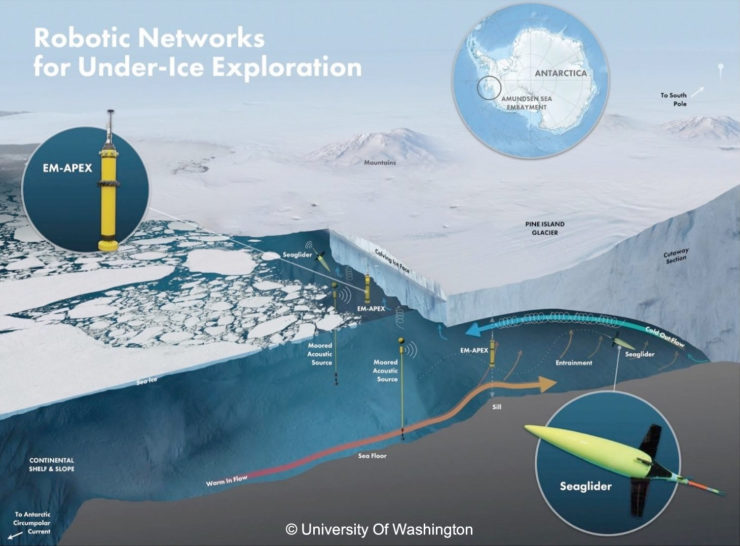
The weather-smoothed, bright surfaces of Antarctica’s ice might look innocent and inviting, but deep under that lies the darkest landscape you will find anywhere on earth. Most of these places have never been explored or even visited by people before. The melting water underneath Antarctica has carved out amazing caves and inverted canyons that reach up to thousands of meters, with ledges and terraces that protrude up into the gloom. Sharp crevasses, cracks, and ridges have developed by tides pulling the ice. All these and the unforgiving weather conditions have for a long time made a vast portion of the Antarctica inaccessible.
Things are however about to change after a fleet of 7 underwater drones created by the University Of Washington were released to head into this alien and risky world for a yearlong exploration mission. The primary goal is to forecast and understand the rising of the sea level by observing the ice melting process where layers of cool and warm water mix at various shelves.
Scientists have been unable to understand the complex physics that take center stage in this unique part of the world because of inaccessibility. With this mission, they hope to collect data that will help them predict the behavior of ice shelves more accurately and understand how this will affect people living near the ocean.
Scientists have known for a long time that ice shelves in Antarctica are intrinsically unstable. However, little is understood about the variables that bring about this instability or even how the shelves react to significant external forces such as warming sea temperatures. Thankfully, scientists hope to gain more insights about such parameters from this drone mission
The robotic drones have been hardened for this long mission; however, they were originally designed for operation in open water conditions rather than frozen, hard shoreline conditions surrounded by unfamiliar hazards and with very limited means of communication in case they run into complications. There is a risk of some of the drones’ components not making it back.
Previous attempts to carry out this mission involved experts drilling holes through ice shelves and sending robots on short trips below. These missions have however been limited to small areas and brief timelines, and could not provide enough data that can help scientists fully understand the behaviors of these shelves.
This is why scientists at the University Of Washington are sending their fleet of diving drones to cover over 50 square miles for a period of close to one year. We look forward to the success of the mission and collections of meaningful data.
|